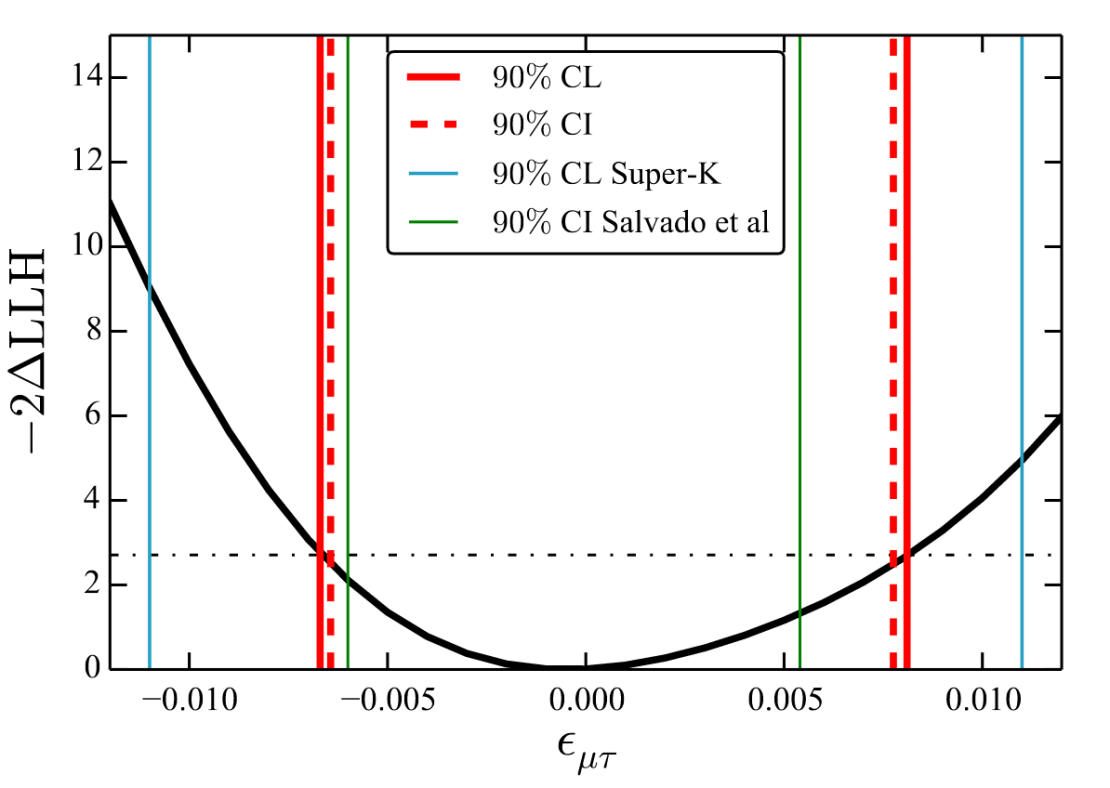Neutrinos are intriguing in more ways than one. And although the fact that they have such tiny mass explains their quirky behavior, their allure remains intact. The issue is that neutrino masses are not predicted by the Standard Model; thus, on its own, the existence of a neutrino with mass is an indication of new physics. And that’s what scientists around the world, including at IceCube, want to learn: what type of new physics are neutrinos pointing to?
New physics could appear in the form of a new type of neutrino or it could help us understand the nature of dark matter. The possibilities are endless. In a new search for nonstandard neutrino interactions, the IceCube Collaboration has tested theories that introduce heavy bosons, such as some Grand Unified Theories. These heavy bosons would explain, for example, why neutrinos have masses much smaller than their lepton partners. The study resulted in new constraints on these models, which are among the world’s best limits for nonstandard interactions in the muon-tau neutrino sector. These results have just been submitted to Physical Review D.

The flavor of neutrinos oscillates as they travel through matter or empty space, a quantum effect on macroscopic scales that proves that they have mass. When atmospheric neutrinos reach IceCube after crossing the Earth, they have often morphed from muon into tau neutrinos. If TeV-scale bosons predicted by nonstandard theories exist, they will modify the probability that a given type of neutrino oscillates into other types. The result is that the disappearance pattern of muon neutrinos in IceCube will change, with effects that span a large range of energies.
In IceCube, for studies using atmospheric neutrinos that sail through the Earth, these nonstandard interactions (NSIs) can be parametrized in terms of the strength of muon neutrino to tau neutrino morphing due to an NSI, a parameter called ϵμτ.
IceCube researchers have analyzed three years of data, using the same neutrino sample used for a recent measurement of the neutrino oscillation parameters, but with an additional selection criterion to improve the signal purity. The remaining 4,625 candidate neutrino events were used to fit the oscillation parameters, including the NSI contribution.
The best fit of muon to tau NSI oscillations was consistent with no nonstandard interactions. “Even though no new physics was shown by this study, it narrows in on the possible existence of new neutrino interactions with regular matter” says Carlos Argüelles, an IceCube researcher from MIT. “It also showcases the advantages of having a very broad energy range, so experiments like IceCube can look for new oscillation physics with neutrinos, which are 10 to 1000 times more energetic than the average proton.”
The 90% confidence level upper limit on the NSI parameter ϵμτ is consistent with previous measurements by Super-Kamiokande, which at that time had set the world’s best limits. The new IceCube measurement slightly improves Super-Kamiokande’s measurements, also extending the energy range. A more recent study using published IceCube data at even higher energies has also set limits on the parameter, which in turn were slightly more stringent than the ones of the present study.
Albrecht Karle, a professor of physics at UW–Madison, comments that “the results shown here are based on only a relatively small set of muon neutrinos available.” IceCube is collecting more than 100,000 muon neutrinos per year, which are yet to be mined for physics beyond the Standard Model. “With almost a million atmospheric neutrinos, IceCube has an incredible data set for investigating even small deviations from Standard Model physics.”
And keeping in mind that it’s not all about the detector, Melanie Day, another IceCube researcher and co-author on this paper, adds, “Not enough is said about the value of teamwork and collaboration over individual contributions to scientific results. But without that, this result would not have been possible.”
+ info “Search for Nonstandard Neutrino Interactions with IceCube DeepCore,” The IceCube Collaboration: M. G. Aartsen et al. Physical Review D 97, 072009 (2018), journals.aps.org arxiv.org/abs/1709.07079